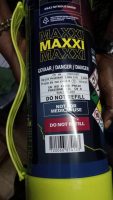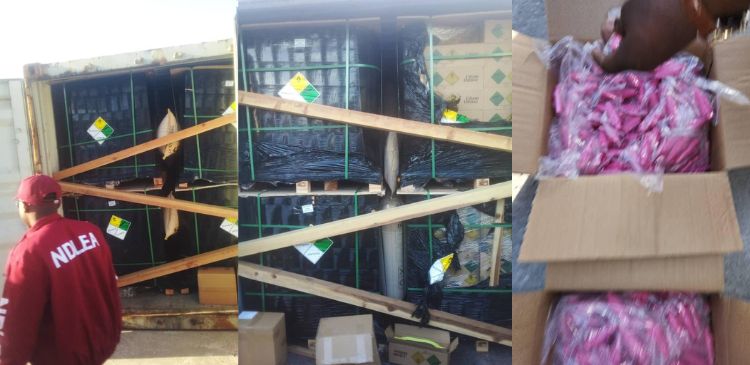The National Drug Law Enforcement Agency (NDLEA) has intercepted two containers marked MSKU 7626856 and MSKU 7689448 containing cartons of Nitrous Oxide commonly known as Laughing Gas, and plastic pressure release nozzles at the Apapa port, Lagos State, South-West Nigeria, imported from China.

NDLEA Media Director, Femi Babafemi, in a statement, indicated operatives of the agency made the breakthrough following credible intelligence barely 24 hours after the NDLEA Chairman, Brigadier-General Buba Marwa (Rtd), directed all commands and formations of the Agency to begin an immediate clampdown on illegal sale and use of Nitrous Oxide, otherwise known as Laughing Gas following its abuse by people who use it for recreational purposes.
Babafemi highlighted that during the search, two of the containers had a total of 522 cartoons of the illicit substance containing 16,366 packages weighing 64,852 kilogrammes. They were recovered along with the paraphernalia for recreational use.

The importer of the consignment, 30-year-old Stephen Eze and his agent, Michael Chukwuma, were thereafter arrested and detained for further investigation.
What to know about Laughing Gas

nitrous oxide (N2O), also called dinitrogen monoxide, laughing gas, or nitrous, one of several oxides of nitrogen, a colourless gas with pleasant, sweetish odour and taste, which when inhaled produces insensibility to pain preceded by mild hysteria, sometimes laughter. (Because inhalation of small amounts provides a brief euphoric effect and nitrous oxide is not illegal to possess, the substance has been used as a recreational drug.)
Nitrous oxide was discovered by the English chemist Joseph Priestley in 1772; another English chemist, Humphry Davy, later named it and showed its physiological effect.
A principal use of nitrous oxide is as an anesthetic in surgical operations of short duration; prolonged inhalation causes death. The gas is also used as a propellant in food aerosols. In automobile racing, nitrous oxide is injected into an engine’s air intake; the extra oxygen allows the engine to burn more fuel per stroke.
It is prepared by the action of zinc on dilute nitric acid, by the action of hydroxylamine hydrochloride (NH2OH·HCl) on sodium nitrite (NaNO2), and, most commonly, by the decomposition of ammonium nitrate (NH4NO3).

 Health & Fitness5 days ago
Health & Fitness5 days ago
 Aviation7 days ago
Aviation7 days ago
 Aviation6 days ago
Aviation6 days ago
 Aviation6 days ago
Aviation6 days ago
 Aviation6 days ago
Aviation6 days ago
 Aviation4 days ago
Aviation4 days ago
 Featured3 days ago
Featured3 days ago
 Crime3 days ago
Crime3 days ago
















